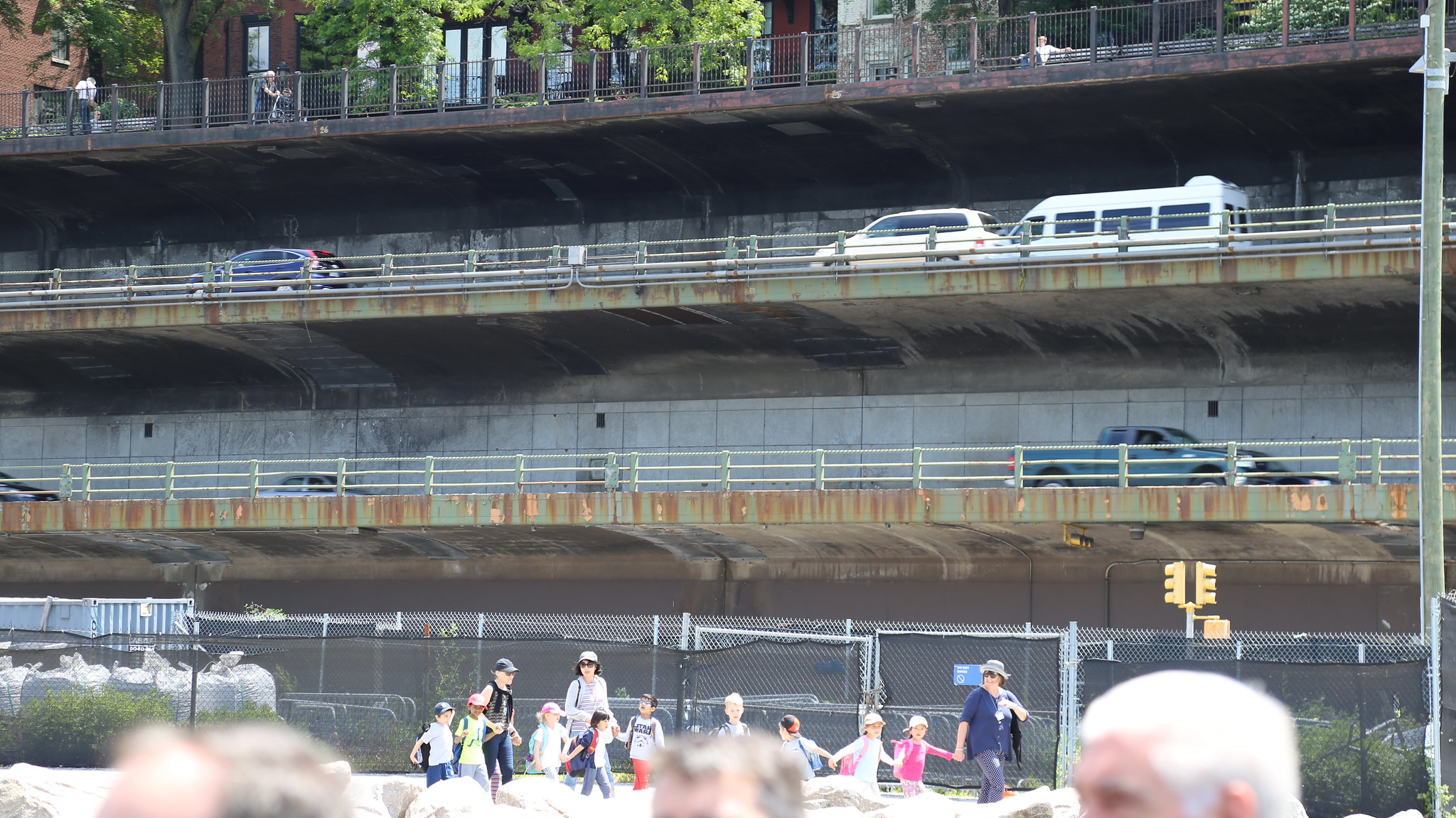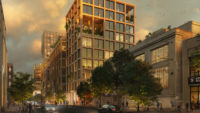Highways
NYC Unveils Redesign Concepts for Brooklyn-Queens Expressway's 'Triple Cantilever'

Designers have proposed different ways of structuring and screening the Brooklyn-Queens Expressway's "triple cantilever."
Rendering courtesy of New York City Dept. of Transportation
New York City is advancing a plan to rehabilitate a deteriorating 1.5-mile stretch of the Brooklyn-Queens Expressway that includes a historic “triple cantilever.” City officials unveiled preliminary design concepts for a rebuild of the highway Dec. 13 with the aim of beginning a federal environmental review process in the spring of 2023.
The design concepts are broken into three main categories: “the stoop,” “the terraces” and “the lookout.” Each category offers different options for dividing lanes, stacking the highway and screening them from the surrounding neighborhood with open spaces. City officials worked with a joint venture team of Bjarke Ingels Group, Parsons Corp., SCAPE Landscape Architecture and WXY to develop the concepts.
The goal is to “transform an environmental and aesthetic nightmare into a dream come true for our city,” New York City Mayor Eric Adams (D) said in a statement.
The targeted section of the BQE in the plan runs from Atlantic Avenue to Sands Street in Brooklyn. It includes several bridges, including the 0.4-mile long, three-level cantilevered structure with separate levels for a pedestrian promenade, Queens-bound traffic and Staten Island-bound traffic over a ground-level local road. The triple cantilever was built between 1944 and 1948, and today officials say it and other bridges and retaining walls need rehabilitation and updates to modern standards.
Officials also say they hope to improve pedestrian and cycling infrastructure along the corridor with enhancements to the promenade and potential additions like a landscape bridge connection to Brooklyn Bridge Park.
NYC Dept. of Transportation Commissioner Ydanis Rodriguez said in a statement that the concepts could help improve quality of life in the area. The city has partnered with 17 community organizations for feedback and public engagement on the project.
“We are urgently pursuing a long-term fix for the city-owned portion of the BQE in Brooklyn, while taking a bold, corridor-wide approach to address the entire structure and reconnect communities throughout Brooklyn divided by this highway,” Rodriguez said.
The design team will further refine the plans based on feedback. Then city officials say they will begin the federal environmental review process and apply for grants.
 The triple cantilever features separate levels for Queens- and Staten Island-bound traffic, and a pedestrian promenade. Photo by NYCDOT
The triple cantilever features separate levels for Queens- and Staten Island-bound traffic, and a pedestrian promenade. Photo by NYCDOT
NYCDOT officials anticipate undergoing a design-build procurement process sometime between mid-2024 and 2026. Design and construction would follow between 2027 and 2032.
In the meantime, some urgent repairs may be performed to extend the service life of the highway’s structures. The New York Metropolitan Transportation Council’s latest Transportation Improvement Program lists $440 million for rehabilitation work in the same section of the highway in 2023.




